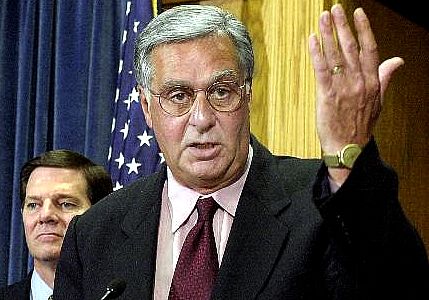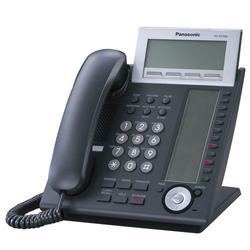Agnieszka Holland appeared on The Bat Segundo Show #433. She is most recently the director of In Darkness, which has been nominated for the Best Foreign Language Film Academy Award and opens in limited release on Febraury 10, 2012.
Listen: Play in new window | Download
Condition of Mr. Segundo: Fumbling in the dark for the Zippo.
Guest: Agnieszka Holland
Subjects Discussed: Creating cinematic environments, how to design a sewer system for a Holocaust movie, the sewer as metaphor, the difficulty of locating the right sewer, Polish sewers, technical limitations on location, managing 60 to 70 people in a tight location, the differences between canalization sewers and sanitation sewers, finding sewer experts, Montreal, Phantasm, Andrzej Wajda’s Kanal, The Third Man, cinematographic efforts to avoid the beauty of the sewers, darkness as a false beauty, avoiding candles, directing actors in real darkness, making a movie which containing numerous languages, linguistic training and actors, ovepreparing actors, the Balak Polish dialect, working with Ed Harris, importing Method acting ideas into the Polish acting community, Jennifer Jason Leigh, finding the right actors, Polish theatrical training, Holocaust fatigue, developing behavioral quirks to overcome tropes, the Downfall meme, Olivier Olivier, Holland’s experience with identity emerging as a theme in her films, Zelig, being identified as the “literary culture” director during the 1990s, Total Eclipse, The Secret Garden as Holland’s favorite book as a kid, being faithful to Henry James, Washington Square vs. The Heiress, and efforts to determine why David Simon paired Holland up with Richard Price-penned scripts on The Wire.
EXCERPT FROM SHOW:
Correspondent: This actually came up in a conversation I had a few weeks ago with the Australian novelist Elliot Perlman. We were talking about the notion of Holocaust fatigue and how some books or films that deal with the Holocaust have to now face this dilemma. I was looking at some of the reviews and some of the write-ups of this film and I noticed, for example, that A.O. Scott suggested that “the Holocaust movie has become a genre in its own right.” And in Tablet, you have Daphne Merkin suggesting that “the audience for Holocaust films is even smaller than the audience for Ukranian imports.” But on the other hand, I think one of the things I appreciated about this film, and also Europa Europa, is that you have characters who are committing adultery, who are shooting up, who are masturbating, and as a result you have behavioral quirks that almost defy these labels. So what do you do, when you’re making a Holocaust narrative of any kind, to get away from these tropes? Does it really come down to these behavioral quirks or what?
Holland: Well, you know, I think that the Holocaust is such an important event in the human history, the border point of the humanity, that I don’t think it will disappear as a subject. Even for the next generation. I think what happens really — it was too many of pretty superficial and not very good treatments of this period and of this subject, which change it to some kind of the moralistic sentimental kitsch and I think really — yeah, this kind of treatment, people have enough. It means, in the first, it was educationally important and work up some kind of knowledge and curiosity. But after, it became some kind of cliche. For me, it’s important that it’s not like, that you cannot label this as the Holocaust. It is not really Holocaust film or it’s not the film of the Polish/Jewish relationship. It’s a film about the human condition and the particular circumstances. And what you know of the human nature is able to give, to deliver the best and the worst. And that is the universal question which you can also translate to another sensitivity and another times. I think personally that the only thing which is important: if it’s artistically successful and if it’s honest. Humanly speaking and psychologically speaking and historically speaking. If it’s dishonest or bad, it’s bad. If it’s really powerful and goes straight to the heart of the people, you know, yes. I think that we, of course, had the ambition to shot into the heart of the people and the brain comes later, you know? And if after it wakes up the reflection, what it was, how it was possible, when was my nation in that, how I will act in those circumstances, that is a bonus.
Correspondent: Yeah. Well, I agree with you. But on the other hand, you as a filmmaker are competing with, for example, the Downfall meme on the Internet. Where they take that scene and put different subtitles with Hitler. “Hitler has learned this.” As a result, any serious consideration of the Holocaust now has to compete with these caricatures. Although, oddly enough, I guess you were sort of ahead of the trend with the Hitler who’s in Europa Europa.
Holland: Right.
Correspondent: But how do you deal with this? Does it really come down to creating subcultures? Behavioral quirks along these lines that defy all tropes?
Holland: Well, you know, it’s where we are today. And anyway, you know, the Internet. And you think of the artifacts and the pieces of art on the Internet and the cut-and-glue, you know, kind. It exists. You cannot do anything about it. And of course, you can answer the question, “How long the regular dramatic narrative will survive?” And if it will change to something different. Some kind of interactive games or something like that. I don’t know. By now, it still exists and you still can touch a pretty amazing amount of people with that.
Correspondent: I was always curious. I’ve been wanting to ask you this. Why are you so interested in frauds and swindlers and those who have secret identities or who are pretending to be somebody else? I mean, even in this film, you’ve got con men. There’s the pretense with the cash. Olivier Olivier — is the boy real or not? Things like that. Is this, I suppose, the result of growing up in pre-Solidarity Poland? This natural curiosity? Or is it just good for narrative?
Holland: Probably. Probably. In Polish Jewish family also, where, you know, I had to change those hearts depending upon who I am talking to. So in some way, part is my own experience. And being woman in a man’s world. And in general, I think that the people are wearing the masks all the time. So that is like the basic human problem. Who we are really in the depth of our identity and what we pretend if that real identity really exists or is just the function of the circumstances. If it’s something like the true, true, you know, true myself — someplace — and the rest is just some kind of the appearances, the true myself doesn’t exist. Everything is appearances. The question is asked in Europa Europa in a very vivid way. Because the guy had been like the Zelig — changing identities, depending.
Correspondent: And very flute-based as well.
Holland: Right. And in Europa Europa, it was paradoxical. It was that his identity was his circumcised penis. If he wasn’t circumcised, probably he will become someone else totally. And that he had to remember.
Correspondent: No greater physicality than that. (laughs)
The Bat Segundo Show #433: Agnieszka Holland (Download MP3)


 Customers service reps, bearing the brunt of too much stress, were given five 30-minute breaks each week. The new contract also made it difficult for workers to be shuttled around from one national region to another, which caused
Customers service reps, bearing the brunt of too much stress, were given five 30-minute breaks each week. The new contract also made it difficult for workers to be shuttled around from one national region to another, which caused  For eager customers, however, the more important question was whether or not Verizon could roll out its DSL services faster. Verizon, like Flashcom, was sometimes taking
For eager customers, however, the more important question was whether or not Verizon could roll out its DSL services faster. Verizon, like Flashcom, was sometimes taking  It’s worth pointing out that Verizon did listen to its customer base from time to time. The company had pulled its ads
It’s worth pointing out that Verizon did listen to its customer base from time to time. The company had pulled its ads  Verizon took great care in presenting itself as a corporation that cared about the public. In October, Verizon spokesman Kevin Moore
Verizon took great care in presenting itself as a corporation that cared about the public. In October, Verizon spokesman Kevin Moore